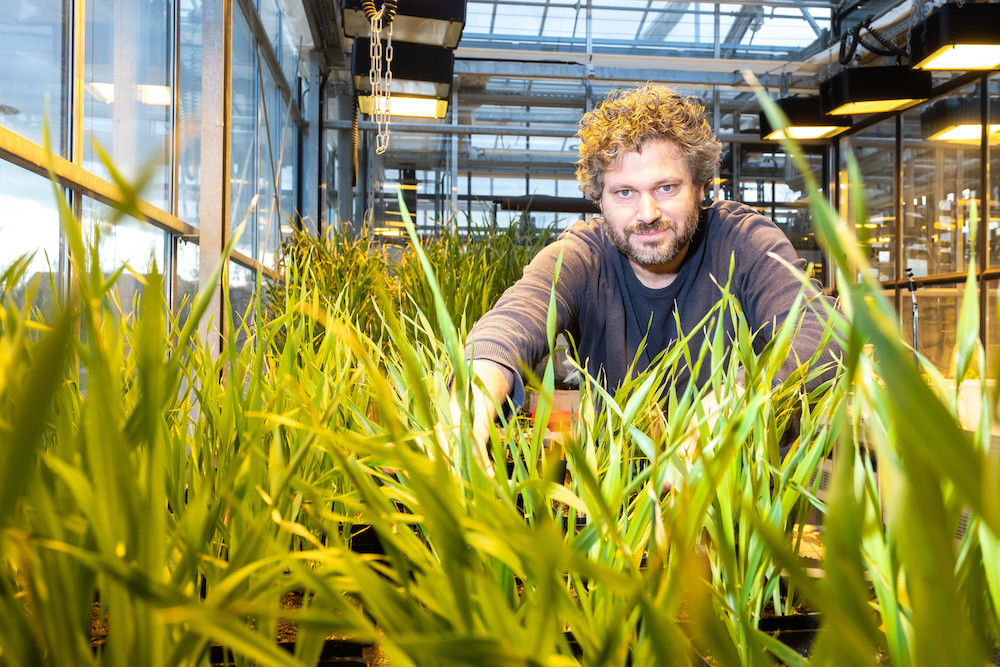A genomic journey through time

From gigantic sequoia trees and tiny duckweed, to ornamental orchids and unassuming moss cushions: in the course of around one billion years, the earth’s plants have undergone enormous diversification. Botanists have identified more than half a million species, all of which can be traced back to a common ancestor. But how could just a few relatively simple algae produce so many different plants with such a diverse range of shapes, colours, features and ways of living? Professor Marcel Quint from the Institute of Agricultural and Nutritional Sciences, and Professor Ivo Grosse from the Institute of Computer Science at MLU are leading a team that is looking into this question – and finding astonishing answers.
Every journey into the distant past begins with the genetic material of today’s plants. “If you want to understand evolution, you have to look at the genomes of the individual species and compare them with one another,” explains Ivo Grosse. The sequence of the DNA building blocks plays a decisive role. If two species have only recently split off from one another, these sequences will still look very similar. If, on the other hand, the last common ancestor lived a long time ago, there will be considerably more differences.
Making such comparisons, however, requires the DNA sequences of as many species as possible. For a long time, botanists were at a clear disadvantage in this regard. Their objects of research have a particularly large and complex genome, which is correspondingly difficult to analyse. “While hundreds of animal genomes have already undergone sequencing in the past twenty years, plant research has been lagging behind for a long time,” says Grosse.
In response, around 200 experts from all over the world launched a mammoth project ten years ago called the “One Thousand Plant Transcriptomes Initiative”. The aim was to sequence the genome of at least a thousand species across the family tree of plants - from the more primitive algae, mosses and ferns to more sophisticated flowering plants. “We wanted to work as efficiently as possible,” says Marcel Quint. Many questions posed by evolutionary research do not require an investigation of the entire genome; only parts that actually contain genetic information are needed. Therefore, instead of examining a plant’s DNA, the researchers are examining its RNA – in other words, a copy of the blueprints stored in the genome which the organisms use to produce their proteins.
Since its inception, the initiative has sequenced about 1,500 of these so-called transcriptomes. “It is a treasure trove of data that still contains many undisclosed secrets,” says Grosse. The bioinformatician and his colleagues from Halle are investigating the evolution of gene families as part of a subproject. His doctoral student, Martin Porsch, recently traced the development of such large groups of genes with similar functions across the family tree of plants.
“There are many different gene families, some of which have several hundred members,” explains Grosse. Botanists have a good idea of how this familial diversity came about. Crucial here is the ability of plants to duplicate individual genes or even their entire genome. In the process, new material for evolution to play with is constantly being created. This is because tiny changes allow these copies to take on a new function, while the original gene continues to function according to the established pattern.
A look at the genome reveals that evolution has proceeded rather erratically when it comes to these duplications: For a long time, hardly anything happened, then there were downright explosions in genetic diversity. Botanists already thought they knew when the latter took place. “It is obvious that particularly complex organisms, such as flowering plants, also have a particularly large number of genes,” says Marcel Quint. Many experts had therefore assumed that, shortly before the emergence of this group of plants, around 160 million years ago, evolution had set off a virtual firework of duplication.
But that’s not how it happened. “Many of these duplications are much older and date back 500 million years, to a time when the first plants began leaving the water,” explains Quint, summarising the results of the study, which was published as a cover story in the scientific journal “Nature”. The astonishing thing about this discovery is that evolution got hold of a large construction set of genetic material, which it did not make use of initially. The plants carried around gene families as part of their genetic material that would not be used in the development of flowers, seeds or roots for millions of years. “We were very surprised by this because nature doesn't normally carry around a lot of ballast,” explains Quint. Anything that has no direct benefit only consumes energy unnecessarily and is therefore discarded.
The researchers still do not know exactly why it was different in this case. The gene families that are now responsible for flowers and other modern innovations most likely played a different role in the past. And it is quite possible that they will assume new roles in the future. There is a lot of material slumbering in the genome of plants that evolution can continue to work with. This is good news in times of climate change and other environmental changes. Because adaptability is urgently needed right now. This makes it all the more crucial to protect this genetic resource, stresses Quint: “With every species that dies out, genetic information that might be extremely important for the future is also lost.”
Professor Marcel Quint
Institute of Agricultural and Nutritional Sciences
Telephone: +49 345 55-22739
Mail: marcel.quint@landw.uni-halle.de
Professor Ivo Große
Institute of Computer Science
Tel. +49 345 55-24774
Mail: ivo.grosse@informatik.uni-halle.de

Kommentare
mario ojeda am 30.05.2020 21:24
merci
Reply